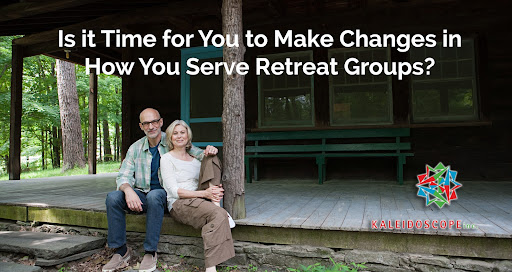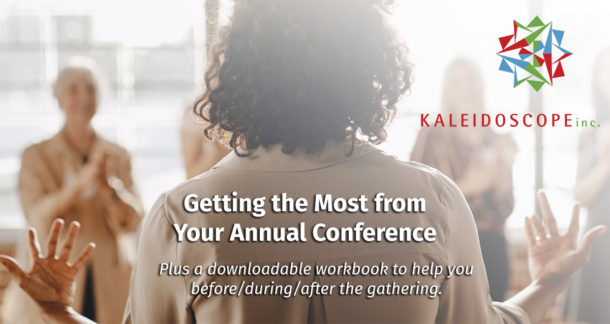It’s no secret that best practices change, and circumstances (pandemics, staffing challenges, the economy) force new best practices more quickly. Because of many of these circumstances, retreat centers need to adapt much more often than ever before.
The Changing World
Before we dive into the changing best practices, let’s establish a baseline understanding of why adapting is essential.
First, nearly two years ago, Coronavirus spread worldwide and halted our economic engines. Because of the market dive, almost every business, family, and person took a hard look at what expenses could be eliminated. Off-site retreats and gatherings were an easy cut because gatherings in person were out of the question anyway. As a result, we saw income dive nearly zero for most of our nation’s retreat centers.
Second, due to the fluctuations in the economy and shifts in the ways we work, we are seeing staffing shortages everywhere we look. For example, hiring for summer positions in 2021 was a catastrophe, and most camps/retreat centers are already scrambling to get 2022 summer staff in place to avoid a repeat. Hiring year-round positions, especially hourly staff, is also challenging, with applicants in short supply and employee longevity shorter than ever.
Finally, how people gather has changed significantly. Aside from the restriction because of COVID, we see less corporate retreating. Unfortunately, we also see adults less willing to use accommodations that aren’t high comfort.
This is certainly not a comprehensive list of the things that have and will continue to affect retreat usage, but it offers enough insight to see that we are facing enormous shifts.
I hope it isn’t a surprise to you that the way we operate retreat centers also needs to change.
Four PAST Beliefs That Need to Change
- Every weekend is available for any size group to rent.
- Facilities that were built for summer camp can be used for retreat groups.
- Retreat facilities are attractive for corporate groups.
- Retreat operations help fund summer camp.
Upfront, let me state – what is valid for one operation isn’t necessarily true for all. Some of the ideas I present may not apply to you. I offer these ideas for your consideration, not for your instant adoption.
Every Weekend is Available for Any Size Group to Rent
We have opened up every possible space for groups to rent to maximize usage. We accept any size group assuming that any income is better than no income. And, we schedule our staff whenever we have a group to serve.
These practices worked well when we had more consistent usage by larger groups. If you are operating under these philosophies but find yourself serving a small number of groups each weekend, consider a new way.
What if you only open your retreat facilities 2-3 weekends a month. By forcing groups into your availability, you create efficiencies of scale. You also make staff scheduling more straightforward and consistent, giving everyone at least one weekend per month off.
Take a look at your next three months and test this idea on paper. Are there chunks of time you could make unavailable for groups? If those groups move to the other open times, would you be more efficient in meals and hospitality services, saving time and money? Would your staff have more consistent schedules and appreciate the time off?
I would not recommend you upend those next three months. That may be too fast of a shift for the groups you already have booked. Instead, I recommend you look at the following three months and beyond to see what you can do.
Facilities Built for Summer Camp Can be Used for Retreat Groups
Take a look at the type of groups you are serving. My guess is that you are seeing repeat user groups get smaller and skew older each year. If that is true, the practice of using the same facilities that you built for summer camp during retreat season is probably not going to gain you much usage.
The fact is that most retreat groups, youth, and adults, desire a higher level of facility comfort. Even if you can take the bunk beds out of the cabin and put in a cozy queen size bed and sofa, you still have to navigate the challenge of the restroom/showerhouse that is detached and requires a walk outside to access.
If you are already doing this and it is working, by all means — keep doing it! However, if you are considering adapting facilities, look closely at the whole experience of groups. Is what you can offer really what they want? Is the time and cost of turning over the space, furnishings, etc., worth it?
Retreat Facilities are Attractive for Corporate Groups
Nearly every camp that I talk to and work with insists that local corporate groups have untapped potential to use their space. It’s an idea that has stuck around for a long time but hasn’t netted good results.
The only organizations I see having success in this area are the highest-end facilities with private bathrooms, beautiful meeting spaces, and lots of comfort and amenities. Unfortunately, most of our retreat centers don’t fit into this category.
Corporate groups, especially during the pandemic, are not using your facilities.
This scramble to get and serve corporate groups is a philosophy that I would argue is costing you. You spend time and money marketing to corporate groups. They don’t come. They require more time and money to serve when they do, which cuts into your profits.
Unless your facilities and teams were built to serve corporate clients and have an already established audience, now is NOT the time to try to market to or serve corporate groups.
Retreat Operations Help Fund Summer Camp
I know, I know – you will tell me a story about a camp where this has worked. Yes, they are out there. Larger organizations have built high-end facilities and get usage that quickly turn over healthy profits that support summer camp.
However, for most camp and retreat organizations, retreat operations extend your mission and don’t provide a profit margin that supports other areas. That doesn’t mean they aren’t worth doing. I would argue the high value of retreating all day long.
The shift here needs to come in our understanding of why we offer retreats and how we can serve those groups. When you look at your expenses and decide on the fees you want to charge, those need to align with the type of groups you serve and the level of comfort and amenities you can offer in your facilities and services.
After reading the last few paragraphs, the temptation may be to consider building that high-end adult retreat center. STOP. That’s not the point I’m trying to make. Unless you are already serving groups that would use that new retreat center, it will be a long time before you can accomplish the income you need to fund summer camp. And, with the shifting economy and practices of corporate groups, it’s a considerable risk.



